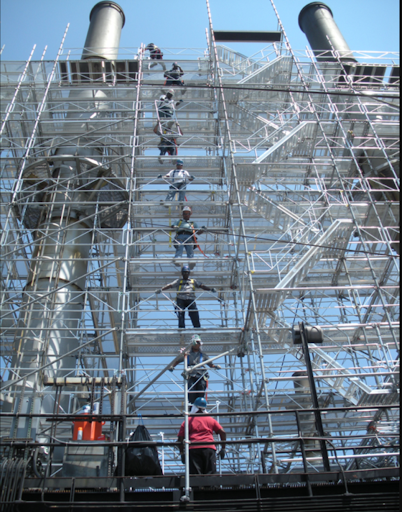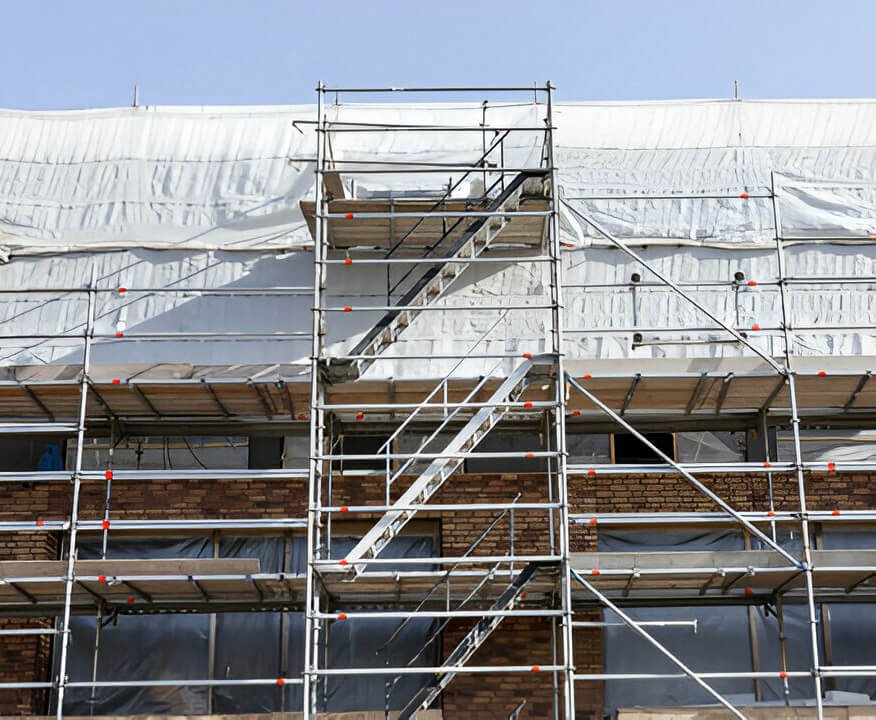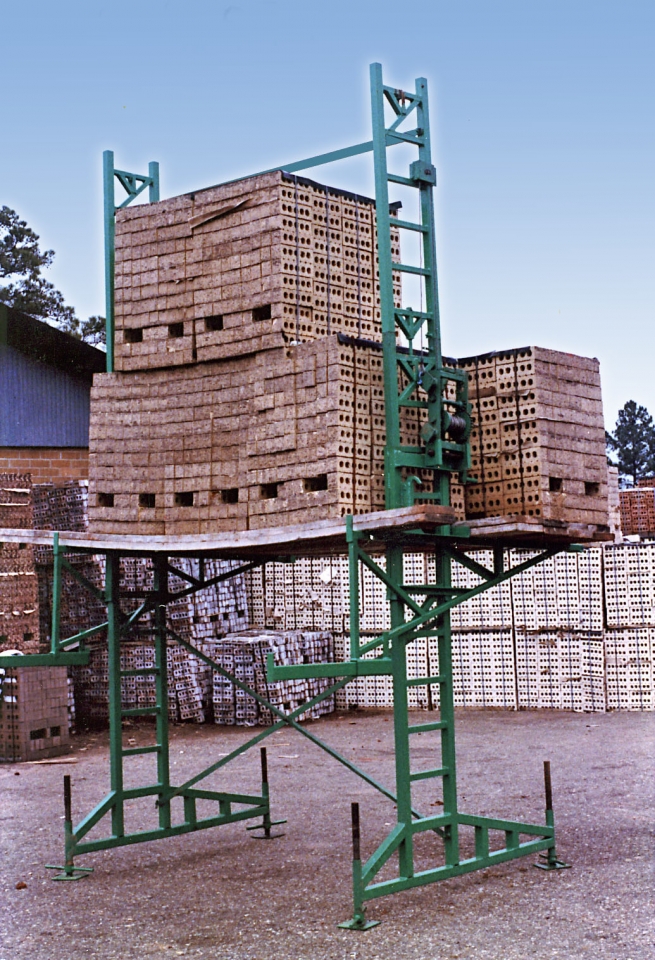Quality Scaffolding Surrey for Both Residential and Commercial Projects
Quality Scaffolding Surrey for Both Residential and Commercial Projects
Blog Article
Checking Out the Different Sorts Of Scaffolding Utilized in Building Tasks
The construction market depends heavily on various kinds of scaffolding to meet details task requirements, each offering unique advantages and applications. Typical frame scaffolding supplies a tough foundation for general tasks, while put on hold scaffolding is crucial for service high-rise frameworks. Other alternatives, such as system and rolling scaffolding, provide to effectiveness and wheelchair, respectively. The cantilever alternative confirms invaluable in urban atmospheres where space is constricted. Recognizing the nuances of these scaffolding types is essential for optimizing safety and security and efficiency on construction websites, triggering a better exam of their one-of-a-kind features and applications.

Conventional Frame Scaffolding
Conventional structure scaffolding is just one of one of the most extensively utilized methods in the construction sector because of its effectiveness and versatility. This system includes upright and horizontal frameworks that are set up to develop a secure system for materials and employees. The primary parts include vertical blog posts, horizontal journals, and diagonal dental braces, which together offer a strong framework that can sustain significant lots.
Among the vital advantages of standard frame scaffolding is its versatility to various building and construction jobs, varying from household buildings to big commercial frameworks. The modular design enables simple setting up and disassembly, making it reliable for both short-term and lasting jobs. Additionally, the system can be personalized in height and width, fitting various building styles and website problems.
Safety and security is critical in scaffolding applications, and conventional framework systems are furnished with guardrails and toe boards to avoid falls and guarantee worker security. Normal assessments and adherence to security guidelines are critical in preserving the integrity of the scaffold (Scaffolding). Overall, typical framework scaffolding remains a basic selection in the building industry, supplying a reputable system for labor and boosting overall job efficiency

Suspended Scaffolding
Suspended scaffolding supplies a distinct service for building and construction jobs that need access to elevated surfaces, particularly in scenarios where typical structure scaffolding may be not practical. This kind of scaffolding is typically suspended from the roof covering or upper degrees of a framework, utilizing a system of wheels, ropes, and platforms to develop a working space that can be adapted to various elevations.
One of the primary advantages of suspended scaffolding is its versatility. It can be easily rearranged or reduced to fit adjustments in construction demands, making it perfect for jobs such as home window installation, frontage work, and upkeep on skyscraper buildings. Additionally, the marginal footprint of suspended scaffolding enables far better use of ground space in city settings, where room is typically minimal.
Safety is an important consideration in the usage of put on hold scaffolding. On the whole, suspended scaffolding provides a effective and reliable remedy for accessing hard-to-reach locations in numerous building circumstances, enhancing both efficiency and safety and security on website.
System Scaffolding
System scaffolding, typically considered a modern option in the scaffolding industry, includes pre-engineered elements that can be quickly constructed and adjusted for numerous building projects. Scaffolding. This kind of scaffolding is characterized by its modular style, which enables for convenience and effectiveness on job websites, fitting different heights and architectural needs
Commonly made from high-strength steel or aluminum, system scaffolding provides enhanced toughness and security. The investigate this site elements include vertical posts, straight journals, and diagonal dental braces, which adjoin securely, guaranteeing a robust framework. The style often integrates standardized fittings, streamlining setting up and disassembly procedures, thereby decreasing labor time and expenses.

Rolling Scaffolding
Moving scaffolding is a functional alternative to conventional fixed scaffolding, made for flexibility and simplicity of use on building and construction sites. This kind of scaffolding includes a system supported by frames with wheels, permitting employees to quickly relocate it as needed. The mobility attribute substantially improves productivity, as it reduces downtime associated with setting up and dismantling taken care of scaffolding.
Usually constructed from lightweight products such as aluminum or steel, rolling scaffolding supplies a sturdy yet portable service for tasks calling for frequent repositioning - Scaffolding. It is specifically beneficial in jobs such as painting, drywall installment, and electric work, where access to various heights and locations is required
Safety is vital in rolling scaffolding style, with functions such as locking wheels to stop unintended movement when being used, and guardrails to shield workers from falls. In addition, many models are adjustable in height, accommodating various job needs.
Cantilever Scaffolding

The design of cantilever scaffolding typically involves making use of arms or braces anchored to a scaffolding price building or framework, enabling the platform to prolong outward securely. Safety is extremely important; hence, these scaffolds need to be crafted to endure different tons and ecological conditions. Normal assessment and upkeep are vital to make sure structural stability and worker safety and security.
Cantilever scaffolding is favored for its flexibility and efficient usage of space, making it a popular selection in metropolitan atmospheres where area constraints are typical. It helps with simpler accessibility to high elevations, eventually contributing to the overall performance of construction tasks. Just like all scaffolding types, appropriate training and adherence to safety criteria are critical for workers making use of cantilever scaffolding.
Conclusion
Finally, the diverse kinds of scaffolding used in construction jobs each offer distinctive purposes tailored to particular site requirements. Traditional structure scaffolding supplies stability, while put on hold scaffolding offers versatility for elevated jobs. System scaffolding facilitates fast setting up, and rolling scaffolding boosts movement for differing workplace. Cantilever scaffolding effectively addresses obstacles in metropolitan settings. Recognizing these scaffolding kinds is vital for maximizing safety and efficiency in building, ultimately adding to the successful conclusion of jobs.
Typical framework scaffolding offers a sturdy structure for general tasks, while suspended scaffolding is necessary for job on high-rise frameworks.Rolling scaffolding is a functional blog alternative to typical fixed scaffolding, designed for wheelchair and convenience of usage on building websites. As with all scaffolding types, proper training and adherence to security standards are essential for employees utilizing cantilever scaffolding.
Conventional structure scaffolding offers security, while suspended scaffolding uses convenience for raised jobs. System scaffolding assists in fast setting up, and rolling scaffolding improves wheelchair for differing job settings.
Report this page